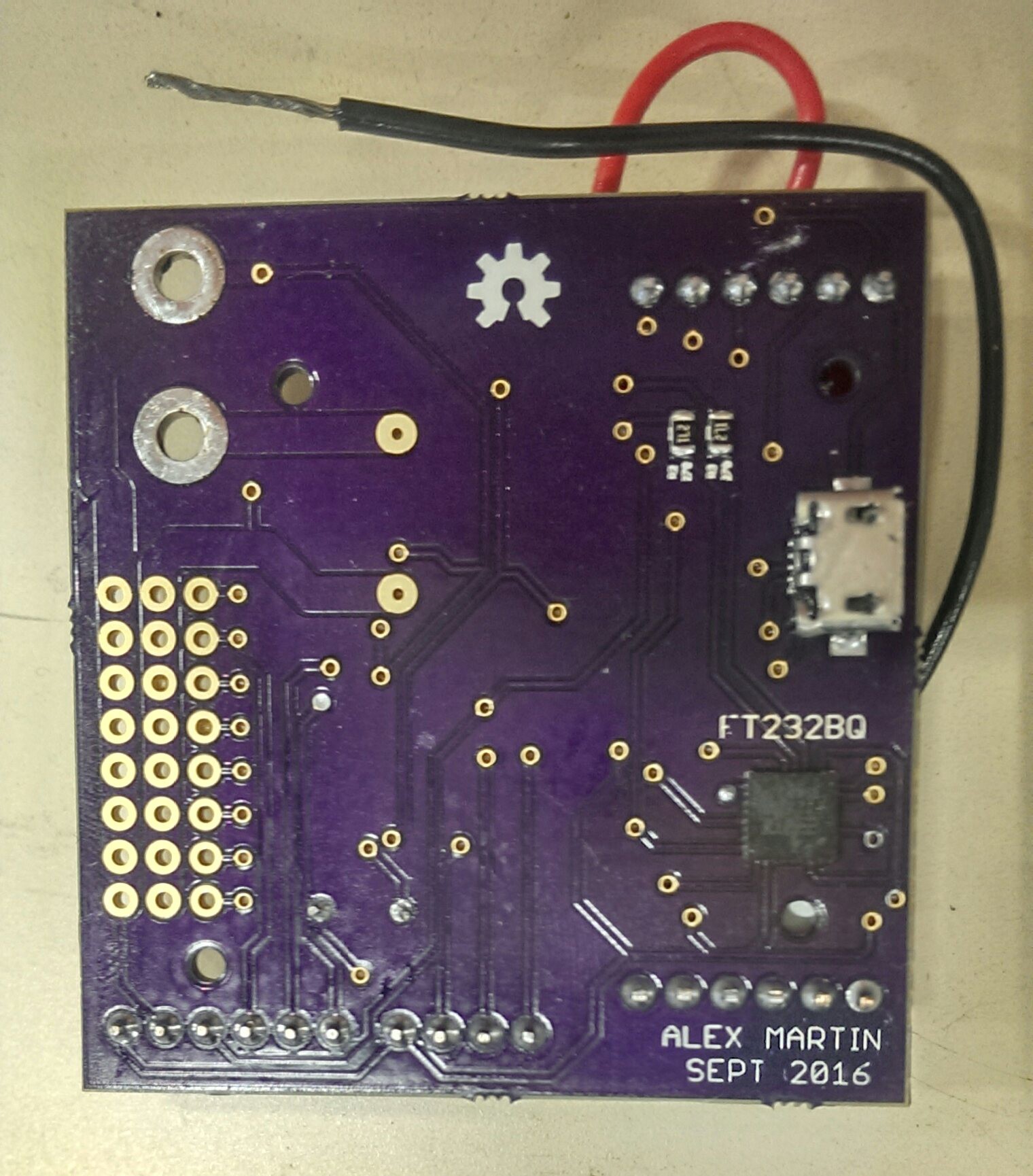I put the board together a couple of weeks ago, but have been unable to get it to work properly. I successfully installed the Arduino bootloader on the ATMega, but can't load sketches onto it. From what I can tell it's because the the reset pin is not being held at 5V (for reasons I don't understand). This is confusing as the master Arduino uses the reset pin of the slave Arduino to upload the bootloader.
The FTDI chip also doesn't work. It's hard to debug as I didn't create any test points on the board. It doesn't show up in the /dev directory, and using the FTDI utility doesn't lead me anywhere.
I'm going to leave this board as is for now and keep the failures in mind for the next revision. I will be using QFPs instead of QFNs in case bad solder connections were the cause of the failures (I have re-soldered both chips multiple times, each time inspecting with a microscope). I will also be adding test points to the FTDI chip to help with debugging.
Below are pictures of the soldered board (yes, those are bodge wires). At least it was fun to put together!


 Alex Martin
Alex Martin
Discussions
Become a Hackaday.io Member
Create an account to leave a comment. Already have an account? Log In.
Random USB notes that may or may not be helpful:
According to the datasheet here: http://www.ftdichip.com/Support/Documents/DataSheets/ICs/DS_FT232BL_BQ.pdf
- Looks like USB D+ needs a 1.5kOhm pullup to the 3V3OUT
- Usually, I try to route differential pairs (D+ and D-) on the cleanest, shortest straight-line path possible, avoiding vias or long detours
- I think 3V3OUT needs a decoupling cap, even if not used
I've never used this USB chip before, but what I'm getting out of this is that it's really complicated to use, and probably expensive (although I haven't checked).
The cheap Chinese CH340G that you can get off AliExpress has always been really good for me. There are some minor driver hiccups in Mac OS X, but those have been solved. Worth a look!
Are you sure? yes | no
Hi Jarrett, thanks for your insights! I agree that I should have followed the FTDI datasheet more closely. I ended up using a circuit I found on the Arduino forums, which seems silly in retrospect.
The CH340G looks like a great alternative at a tenth of the cost of the FTDI chip. I'll consider it for the next run of boards!
Are you sure? yes | no